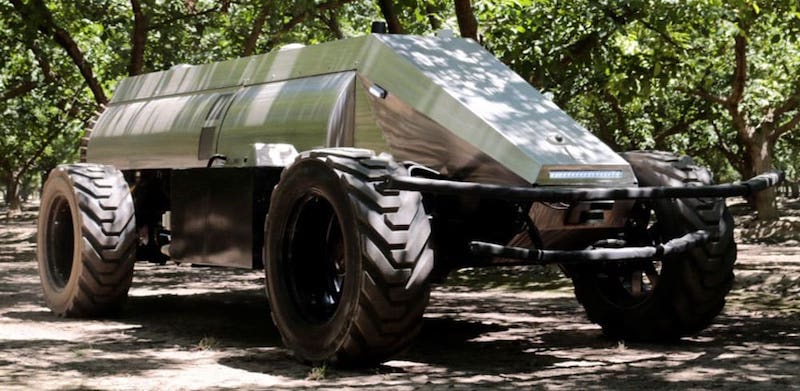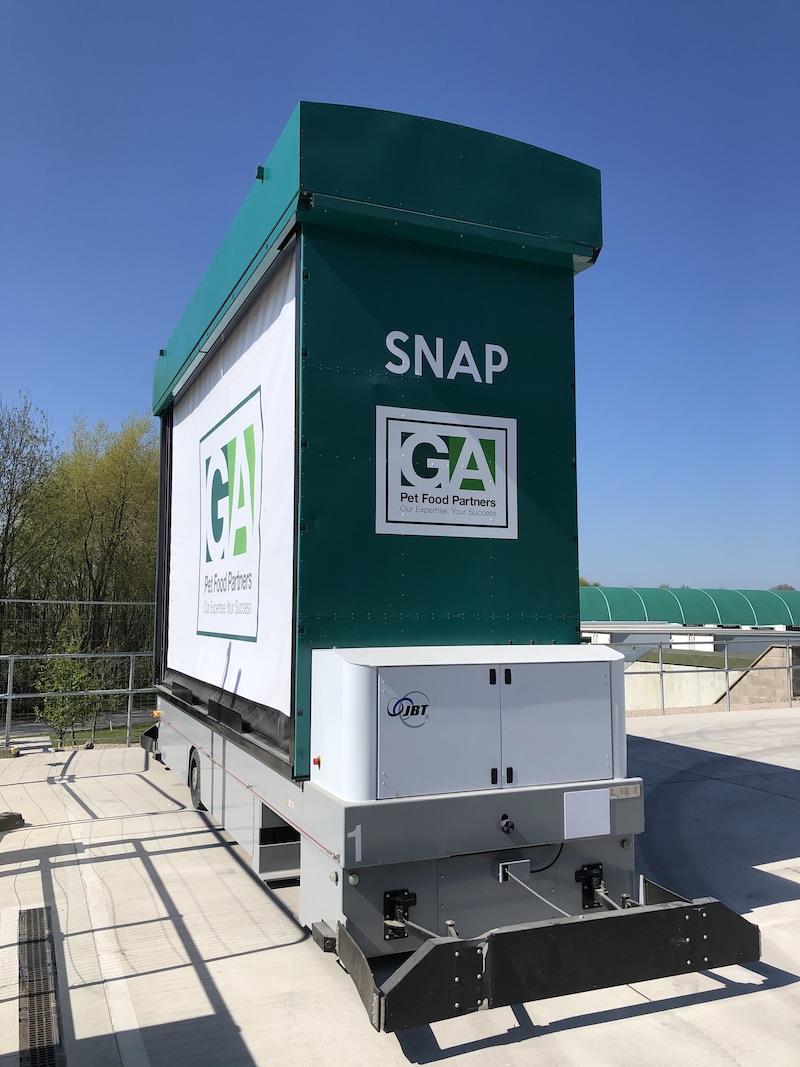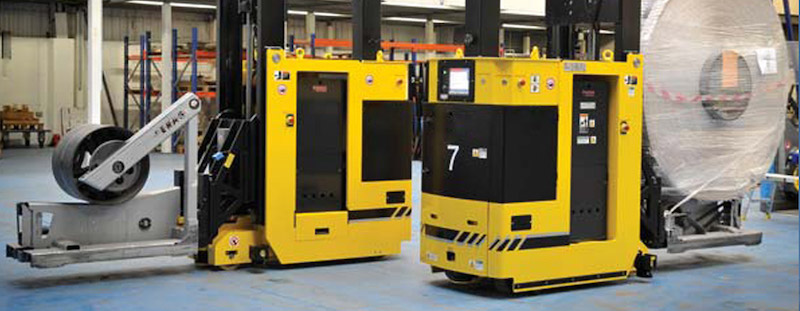KVH Industries: Providing the Expertise and Precision that Autonomous Platforms Need for Accurate, Safe Navigation
The expansion and acceptance of vehicle autonomy will look a bit different from what futurists had predicted as recently as ten years ago.
People movers such as shuttles and buses are on track to become the first practical and widely accepted application of autonomous vehicles.
Getting to this point has been a long journey following decades of research and development into making autonomous technology safe and successful.
Precise navigation and stabilization remain keys to achieving these goals, with Rhode Island-based KVH Industries, Inc. enabling platform developers to solve those challenges affordably for almost two decades.
In 2005, two driverless vehicles raced one another across 175 miles of the Mojave Desert during the federal Defense Advanced Research Projects Agency (DARPA) Grand Challenge. The Carnegie Mellon University Robotics Institute team chose KVH fiber optic gyros (FOGs) for stabilization and navigation.

With its expertise in dynamic sensing-related projects and proven track record with Carnegie Mellon University, KVH was the ideal choice, and its sensors performed flawlessly during the race.
While DARPA set out to expedite the research and development of the military use of autonomous ground vehicles in this demanding race, the 2005 DARPA Challenge also highlighted the value, precision, and affordability of KVH sensors.
As a result, KVH FOG technology and FOG-based inertial systems are now a cornerstone of successful and accurate autonomous navigation and stabilization, logging more than one million miles of autonomous driving.
DARPA Robotics Challenge
Ten years later, KVH played a critical role in another DARPA autonomy project. The 2015 DARPA Robotics Challenge sought to promote innovation in human-supervised robotic technology for disaster response and to create robots more capable of intervening for and even replacing humans in high-risk situations such as the 2011 Fukushima nuclear accident, earthquakes, natural disasters, and other crises.
Of the 25 finalists, 11 integrated KVH’s 1750 Inertial Measurement Unit (IMU) into the robots’ navigation and stabilization systems, improving their ability to fulfill challenge tasks such as walking up and down stairs, opening a sealed door, driving a vehicle, using a drill, etc.
Among the 11 robots relying upon KVH’s IMU was the winning entry, robot DRC-HUBO by Team Kaist of Daejeon, Republic of Korea.
Using those systems and experience as a foundation, KVH recently developed a breakthrough in FOG technology with its photonic integrated chip (PIC)-based FOG.
FOGS Go Photonic
FOG technology is based on the Sagnac Effect, which uses light to measure rotation and is known for its precision and stability.
Although incremental advancements had been made over time in fiber quality, diameter, and gyro coil size, major technological breakthroughs in the basic technology were few and far between until 2019, when KVH introduced a FOG-based sensor with PIC Inside.
This groundbreaking design improves reliability and repeatability – qualities essential to accurate autonomous navigation of all types of platforms, from driverless cars to autonomous inventory control robots – and represents a renaissance in FOG technology.
KVH’s photonic technology replaces multiple, individual fiber components with an innovative integrated planar chip, enabling KVH to produce gyros and inertial systems that deliver:
- Extremely reliable performance
- More than 10x higher accuracy than competing MEMS IMUs
- Superior repeatability unit-to-unit
- Dependable positional accuracy
- Reliable angular rate
- Trusted acceleration data
The addition of high-grade accelerometers resulted in further performance improvements in the specs needed for safe and accurate autonomous navigation:
- 3x better velocity random walk
- 3x – 6x better bias stability
- Superior scale factor vs. temperature performance
- 3x better scale factor non-linearity
Offered with a range of high-end accelerometers, KVH’s new P-series IMUs and PIC-enhanced gyros deliver precise, reliable, and affordable navigation data in all environments and weather conditions.
In addition, when GPS/GNSS is unavailable due to terrain or artificial blockages, KVH’s superior photonic FOG-based inertial systems enhance GPS/GNSS by filling in the navigation data gaps until the satellite signals are available once again.

Why MEMS Fail While FOGs Succeed
It’s easy to understand Micro-electro-mechanical systems (MEMS) appeal given their low cost and small size. However, small and cheap can’t mask the challenges MEMS face when asked to deliver the performance and accuracy necessary to reduce safety risks or provide true situational awareness in dynamic conditions.
MEMS use vibrating sensor technology (Coriolis Effect) to measure rotation. Unfortunately, this vibrating technology produces gyro noise, poor bias stability, and limited bandwidth. By contrast, KVH’s solid-state, Sagnac Effect-based FOGS are inherently low noise and offer excellent bias stability up to 1000 Hz.
Unlike FOGs, MEMS are also susceptible to harsh environmental conditions such as vibration, shock, and temperature. FOG-based inertial systems overcome MEMS’ issues and deliver superior performance, leading to improved safety in all operating environments. This factor is especially vital when autonomous platforms are transporting or coming into close contact with humans.
FOGs and FOG-based inertial solutions provide:
- 10x better bias performance than competing MEMS
- Low noise, excellent bias stability up to 1000 Hz
- Superior reliability and accuracy
- High resistance to vibration & shock affecting moving vehicles
- Precision & repeatability that autonomous industrial robots require
- Ensuring Performance through Rigorous Testing & Qualification
KVH performs a wide range of component-level Design Validation Testing (DVT) as part of an intensive qualification program to deliver comprehensive product testing before release.
The goal is to verify key performance parameters, environmental resilience, and the overall reliability requirements for the KVH PIC technology portfolio. The testing scope encompasses:
- Functional testing (including usability)
- Performance testing
- Reliability testing
- Environmental testing
- Mechanical testing
- Regression testing
- Mean Time Between Failure (MTBF) prediction
KVH meticulously tests its new PIC technology at both the part and product levels to ensure superior performance, accuracy, and reliability.
Part Level Testing includes over temperature cycling, temperature and humidity, and shock and vibration – all performed over multiple lots of parts to validate the repeatability and robustness of manufacturing.
Product Level Testing covers the complete set of performance specifications and environmental conditions, repeated over time to validate the design.
KVH engineers verify compliance with the requirements during product validation with PIC and fiber array environmental testing based upon Joint Electron Device Engineering Council (JEDEC) Solid State Technology Association standards.
In addition, the test process also utilizes Telcordia and MIL-STD-810H, both for the optical components and the finished product. KVH validates the design by testing individual PICs and fiber arrays along with complete gyros.
These tests include industry-standard semiconductor temperature and humidity testing as well as shock testing that mimics the actual manufacturing process. In addition, both undergo mechanical shock and vibration testing, mounting and substrate testing, and strength testing.

Making Autonomy Affordable
The availability and interest in autonomous vehicles and platforms continue to increase. However, achieving the promise of autonomous technology will require navigation and stabilization solutions that meet demanding safety, performance, and mass production requirements.
KVH’s revolutionary photonic chip technology and the resulting reliability and repeatability deliver FOG-based inertial systems with the performance, manufacturability, and capabilities necessary to serve the expanding commercial autonomous vehicle industry.
Contact KVH Inertial Navigation Sales for more information on how to get KVH’s reliable, high-performing FOGs and FOG-based inertial systems working in your next project.
Main image: The humanoid robot, HUBO, carried the Olympic torch in the Pyeong Chang Olympics in 2018. This was especially fitting as HUBO was developed by KAIST (Korean Advanced Institute of Science and Technology) and won the DARPA Robotics Challenge thanks to its ability to switch back and forth between walking and wheeling. Onboard was the KVH 1750 IMU which helped HUBO with stabilization and navigation.
KVH Industries, Inc., 50 Enterprise Center, Middletown, RI U.S.A. +1.401.847.3327 · info@kvh.com
©2021 KVH Industries, Inc. Specifications subject to change without notice. Protected by U.S. Patent # 10,274,319. Additional patents are pending. KVH is a registered trademark of KVH Industries, Inc.

